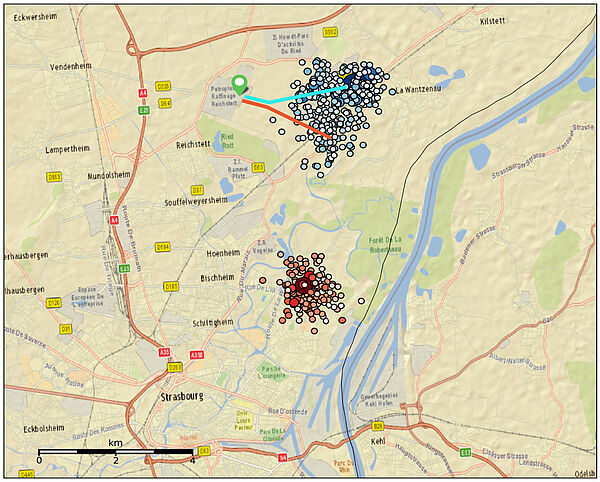Abstract :
Between November 2019 and January 2021, a series of seismic events were felt by the population of the city of Strasbourg, France. The first main event (MLv 3.0) that occurred on November 12, 2019, was part of a seismic swarm (the southern cluster) that has been initiated a few days before, lasted four months, and was located by the BCSF-Rénass (EOST), below La Robertsau area at a depth of 5 km. Its location in the vicinity of the deep geothermal wells (Geoven), the temporal correlation with the injection activity on site, the similarity of the depth between the bottom of the wells and the hypocenter of the event, the lack of local seismicity before the event occurrence, the known geological structures including crustal faults in the area, all strongly support the possible triggering of the events by the deep geothermal activities despite the relatively large distance (4–5 km). From template matching and double-difference relocations, a complex fault zone is evidenced in this southern cluster area that extends over 800 m. Focal mechanisms of the two largest events of the cluster are consistent with the known orientation of the main fault zone in the area. The regional stress field in combination with the fault orientation and a Coulomb failure criterion shows that the seismic cluster location is in an unstable domain, if the cohesion of the fault is weak, particularly sensitive to stress perturbations. In October 2020, after a new series of hydraulic tests, second cluster of seismic events with more felt earthquakes (the northern cluster) developed closer to the geothermal wells (<1 km) below the La Wantzenau area. It includes the largest event (MLv 3.6) that was induced on December 4, 2020, and caused the definitive arrest of the project. On January 22, 2021, three weeks after the shut-in of the wells, an MLv 3.3 event happened with the same location and focal mechanism. We propose here an extended seismotectonic analysis of both seismic clusters.
Cet article, rédigé par plusieurs chercheurs de l'ITI GeoT, fait le point sur les événements sismiques survenus entre novembre 2019 et janvier 2021.
Le reste de l'article est visible en suivant ce lien


